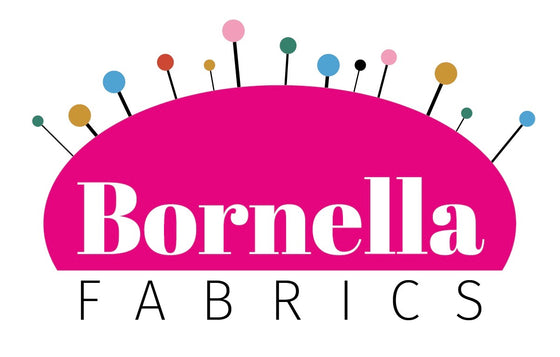
A guide to using corduroy and needlecord
I've been on a little roll recently with sewing with cord and needlecord - first I made the Lander pants by True Bias with our navy jumbo cord. Secondly I made the Milton Pinafore dress by Peppermint Magazine, designed by Just Patterns using our forest green needlecord.
 .
.  .
.
So while I'm not a newbie to working with corduroy, I'm nervous about it more than many other fabrics. I've sewed the Katy Pinafore using our muted clay cord, and also sewed my daughter a set of dungarees from a purple cord many years ago. (I LOVED making those dungarees - she point blank refused to wear them. I tried and tried to persuade her. I even ironed on some fun patches to coax her but to no avail. Those dungarees are still in her wardrobe and I refuse to gift them on as I love them so much.)
I thought it would be handy to run through some tips about working with cord for those that also are nervous around it or new to working with it.
First thing's first, some jargon that's helpful to know when buying or using cord:
- wale. This refers to the fuzzy ridges in the fabric. 6 wale would have 6 ridges per inch making it pretty chunky, whereas 21 wale would have 21 ridges per inch making it much finer, like needlecord.
- there are different sizes of cordurou - jumbo cord (around 3-10 wales), regular cord (11-14 wale) and needlecord (15+ wale).
- nap. The cord has a nap, or pile - if you stroke it in one direction it feels and looks very different than the opposite direction. It also catches the light differently.
- loft. In general, the wider the ridges, the thicker the fabric is going to be. And vice versa.
So here are my tips on using corduroy, whether big, small or somewhere in the middle:
Preparation BEFORE cutting is key:
As with all fabrics, you should wash them before you work with them. This is normally in case of shrinkage as you don't want your fabric shrinking unevenly. With cord, I've found the washing process even more important as it can 'reset' the pile. Where it's been folded (maybe on the bolt or during posting and storage) the pile on the fabric may look uneven. Washing will start the process of resetting the pile.
Ironing is the next big thing - make sure you iron in the same direction. Feel which way the nap goes (when it feels smooth) and then iron in the same direction. If you iron against the grain or in a circular motion then it will look uneven. And voila, all of a sudden you had a lovely piece of corduroy that is ready to go.
Cutting out
Once your fabric is ready to cut out, the vertical lines of the cord will be your cutting guide. Take your time to make sure those straight corduroy tracks line up with your straight grainlines of your pattern pieces. Like any stripe, it'll be obvious if it's a bit off.
If you're anything like me, you like to make the most of every last square centimetre of fabric so the cutting guide tends to go out of the window in favour of being as efficient as possible. BUT there is a nap so be aware.
Some pattern pieces have the grainline marked with a one-way arrow, and some patterns have two-way arrows. It's important that all your pattern pieces follow the same direction with corduroy as it'll look REALLY obvious is one piece is round the wrong way. The Lander Pants have a one-way arrow which was very helpful but if your pattern has two-way arrows, just take a moment to double check which direction you need to place the piece on your fabric. A moment checking will save you a lot of headache further down the line!
(I cut two pieces with the nap running the wrong way for my dress. And I was being extra careful. It happens to all of us!)|
Mess
During the washing and cutting, I've found that jumbo cord creates a lot of fuzz which requires a bit of cleaning up afterwards. Cord - alongside velvet, sweatshirting, faux fur and basically any fabric with a fuzzy element to it - tends to shed a bit when you're cutting out. The room seems to develop a dusting of fuzz. A quick hoover and wipe down of the surfaces and it's soon gone. But it's something to bear in mind. Once you start sewing the fabric, your seam finishes will stop the fuzz and it's not a problem any more.
Pressing
Once you start sewing, be sure to take care when pressing. You may want to test an offcut with your iron to see how the heat effects it. You can use a pressing cloth if you're worried. Or iron the reverse of the fabric if you have a choice of sides. And just remember to iron WITH the nap, rather than against it.
And that's it. From then on, the sewing process is much the same and you'll have a wonderfully tactile garment at the end to show for it. It's honestly worth the extra effort for
Happy sewing
Tanya xx
 .
. 
